It’s one thing if China registers a low ceiling or Brazil. That wasn’t going to be possible this time in the developed world. Europe and the US were finally going to lead. That’s what they said last year, anyway.
Markets are freaking out about the growing evidence for so many growth ceilings. The other term for it is an “L” shaped economic pattern. The economy, whichever one, they are all related by the eurodollar system, slows or contracts and then only comes back from it to an unusually small degree.
Economists and policymakers (redundant) are dumbfounded time and time again.
Some of these “L’s” are absolutely astounding. Take Brazil’s, for example. That economy was destroyed by the last “rising dollar”, eurodollar squeeze #3. By every reasonable expectation, symmetry should have been the predominant expectation. The farther any economy falls, the quicker and more energetically it rebounds. That’s symmetry, an almost Newtonian economic aspect.
Despite that downturn having ended almost two years ago, Brazil’s economy struggles to manage even marginal growth. Therefore, it isn’t really growth but the appearance of nothing more than positive numbers that plagues every other part of the world. The low ceilings on the upswing are the enforcement of these “L” dynamics.

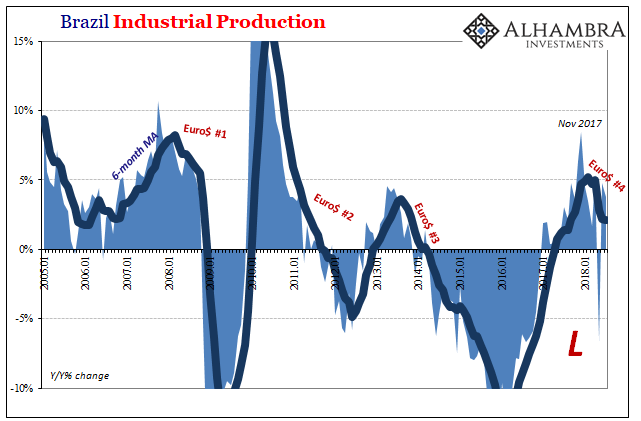
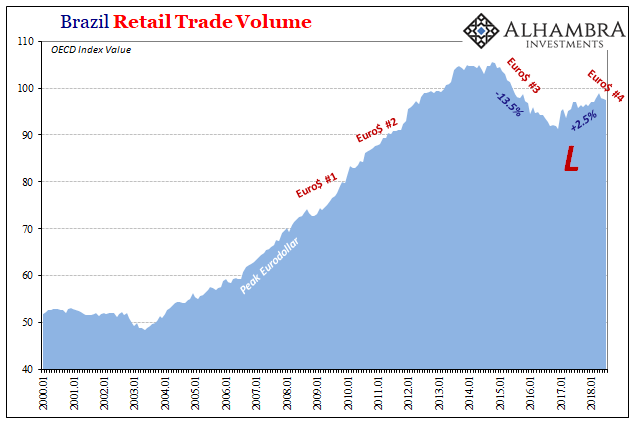
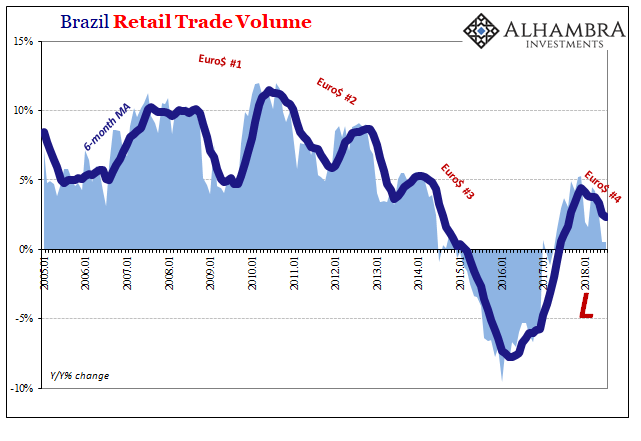
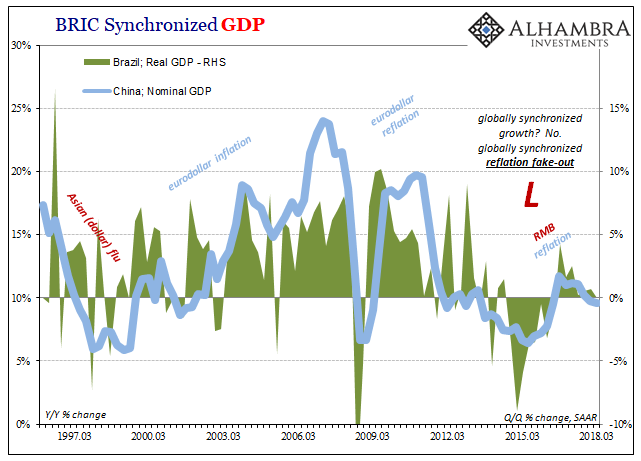
But that’s Brazil, a country easy (if you are lazy) to dismiss as returning to historical type. That economy has always been a basket case, or it was up until the global eurodollar system got itself up and running at full tilt.
The US was supposed to be different. It hadn’t been before, but now was the time to prove the breakout (unemployment rate). Yellen ended QE3 and QE4 in 2014 and it was merely “transitory” factors that delayed the final drive into recovery, she said. Majority opinion concurred, so much so that the last President is squabbling with the current one over who is responsible for the US economic “miracle.”

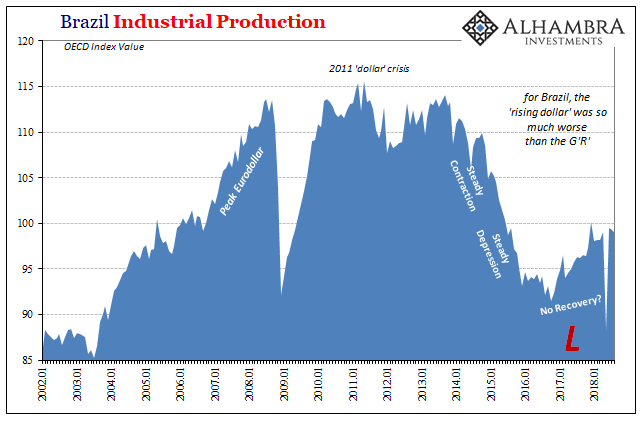











Leave A Comment